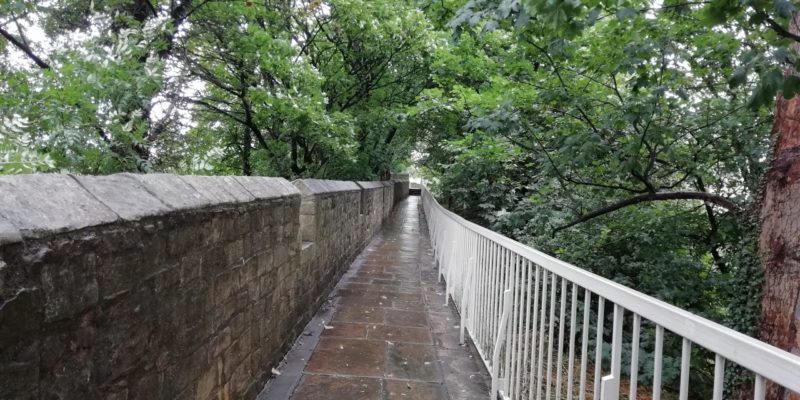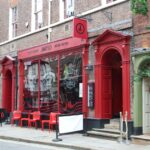York is famous for many things. Its historic Shambles has been the centre of trade in the city since the middle ages and they retain much of their historic charm. The 800-year-old York Minster sits in the heart of the city, towering over much of the other central buildings, while York Castle, (the original of which was built by William the Conqueror) is another must-see sight.

The city’s walls are some of the best-preserved in the country, these walls provided fortifications to the city while it was occupied by the Romans between the first and fifth centuries.

Some more modern delights make York famous too. Bettys Tea Rooms are legendary around the world, while the National Railway Museum is a must-visit for train enthusiasts.
However, another feather in York’s cap is its Viking history. They made a big impression on the city, with many of its street names containing Scandinavian influence
This strong Viking heritage attracts many tourists to York from around the United Kingdom and the rest of the world. Interest in Vikings and their culture has always been strong, and we can see this in how frequently they’re referenced in pop culture. Countless Viking-themed films and TV shows have been produced over the years, including The Last Kingdom and the aptly-named Vikings. Game developers have also leaned heavily on the genre, creating titles like Assassin’s Creed Valhalla, Vikings – Wolves of Midgard, and several themed slot games including Viking Raid Zone and Viking Hoard.
When Did Vikings First Appear in York?
Vikings began invading England back in the late eighth century. One story says that the English King was reportedly not best pleased with this and he captured a Viking by the name of Ragnar and threw him a pit of snakes. As Ragnar met his end, he vowed that his countrymen would return to avenge him and capture the city of York.
While this is likely a work of fiction, the Viking invasion of York in November 866 AD is certainly not.

The Vikings Named York
Until then, the city had been known by its Anglo-Saxon name, “Eoforwic”. Since this was a bit of a mouthful, the Vikings changed it to “Jorvik”.
Since the letter “j” is pronounced with a “y” sound in Scandinavian, it’s clear how Jorvik eventually morphed into the city’s modern name of “York”.
The Vikings Were Good Neighbours
Despite their reputation, the Vikings were, for the most part, good neighbours to the Anglo-Saxons in the city. They assimilated quickly and many later married locals. They also quickly established farms and began settling into Jorvik for the long term.
The city also became a trading hub, with local items being exported to other Viking settlements and foreign goods being imported into Jorvik.
How to See Viking History in York Today
Many of the streets of York have names inspired by the Vikings, but that is pretty much all that’s left above ground. No buildings have survived the millennium since, though many relics still lie beneath the surface.
Coins, jewellery, tools, crockery, weaponry, armour, and stone carvings have all been discovered by archaeologists, which is one of the reasons we know so much about Viking life in Jorvik. One of the most fruitful excavations has been in Coppergate, which helped historians to understand that Viking homes were typically 7m x 5m, with more modern versions using a 2m basement to store foods, tools, and other possessions in.
The Jorvik Viking Centre, which is located in York city centre is the best place to see these Viking artefacts and to learn about how these Scandinavian settlers arrived, lived, and influenced the city.
As well as providing examples of real Viking items unearthed under the city of York, you can learn about the foods the Vikings ate, the skills they needed to live, and the animals they kept as companions.
Tickets to the Jorvik Viking Centre cost £12.50 per person and grant you free re-admission for 12 months. To cater for international guests, the entire experience is available in 15 languages, including Chinese, French, German, Italian, Spanish, Russian, Japanese, and Arabic.


